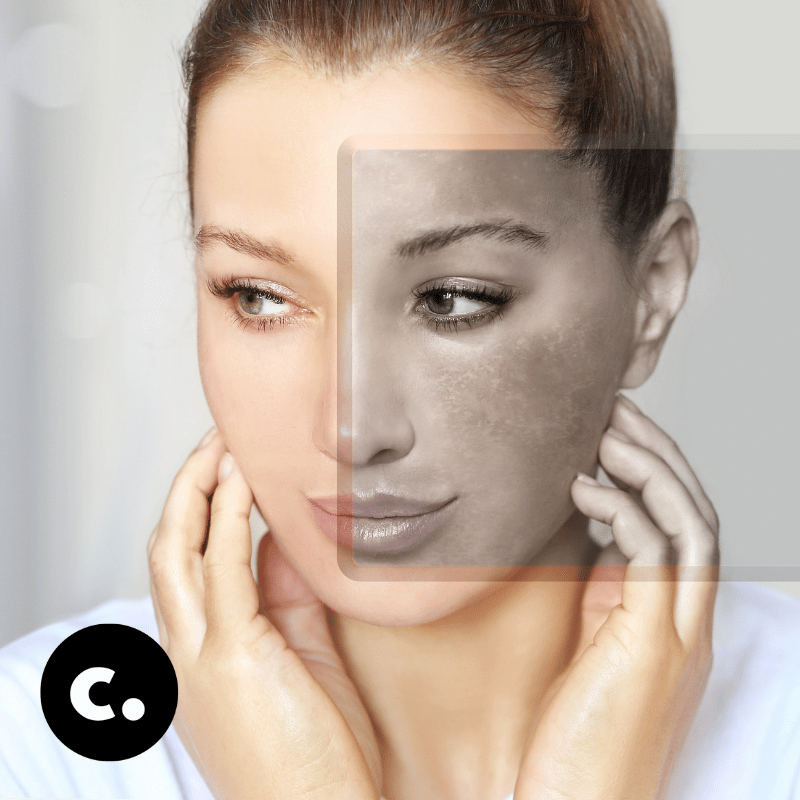Dark spots on the skin can be a common concern for many people. Whether they are caused by sun damage, acne scars, or hyperpigmentation, finding an effective solution to reduce their appearance is essential. One natural ingredient that has gained some attention in skincare is Quassia. In this blog post, I will explore the potential benefits of Quassia for dark spots and discuss how you can incorporate it into your skincare routine.
The Power of Quassia
Quassia, also known as bitterwood, is a small tree native to Jamaica. Traditionally, it has been used for various purposes, such as aiding digestion, treating fevers, and even eliminating hair parasites like lice. But recent research has suggested that Quassia could also be useful in improving certain skin conditions, including seborrheic dermatitis and dark spots.
While more high-quality research is needed to confirm Quassia’s effectiveness, some studies have shown promising results. For instance, applying a gel containing Quassia to the skin has been found to help clear up seborrheic dermatitis in certain individuals. This suggests that Quassia may have potential in treating other skin concerns, including dark spots.
How Quassia Works
Quassia contains bitter principles that are believed to have beneficial effects on the skin. These bitter compounds have been found to possess insecticidal properties, which make Quassia a natural repellent against certain pests. Moreover, Quassia has been shown to inhibit the synthesis of chitin during the larval stage of insects, preventing their reproduction.
When it comes to dark spots, Quassia’s potential lies in its ability to balance the skin’s pigmentation. Hyperpigmentation, the cause behind dark spots, occurs when certain areas of the skin produce excess melanin. Melanin is the pigment responsible for giving color to our skin, hair, and eyes. By regulating melanin production, Quassia may help fade those stubborn dark spots.
Incorporating Quassia into Your Skincare Routine
If you’re interested in incorporating Quassia into your skincare routine, there are a few options available. One way to experience its potential benefits is by using products containing Quassia extract or oil. Look for skincare products that specifically target dark spots or hyperpigmentation and contain Quassia as one of the key ingredients.
An alternative option is to create your own homemade Quassia cream or face mask. Here’s a simple recipe to try:
- Mix 1 tablespoon of Quassia powder or extract with 2 tablespoons of your favorite moisturizer.
- Add a few drops of vitamin E oil to enhance the skin-nourishing properties.
- Gently apply the mixture to your face, focusing on areas with dark spots.
- Leave it on for 15-20 minutes and then rinse off with warm water.
- Follow up with your regular skincare routine.
Note: Before trying any new skincare product or DIY recipe, it’s advisable to do a patch test to ensure you don’t have any adverse reactions. If you have sensitive skin or any underlying skin conditions, consider consulting a dermatologist before incorporating Quassia into your routine.
Remember, consistency is key when it comes to any skincare routine. It may take several weeks to notice visible improvements in dark spots, so be patient and give Quassia a fair chance to work its magic.
In conclusion, while Quassia shows potential in addressing dark spots and other skin concerns, it’s important to approach it as one part of a holistic skincare routine. Combining Quassia with other effective ingredients and practicing sun protection can help you achieve the best results. Give it a try and see if Quassia can be the natural solution you’ve been looking for!
References:
- Applying a gel containing quassia to the skin might help clear up seborrheic dermatitis in some people. But higher quality research is needed to confirm.
- Quassia Amara, also known as bitterwood, a small tree from Jamaica. Traditionally used as a digestive, to treat fever, and against hair parasites such as lice.
- Quassia wood from north-eastern South America was for a century the source of a natural insecticide Surinam quassia.
- Our Quassia wood is also known as bitter wood which is primarily used for digestive benefits.
- Quassia Amara is a natural insect repellent and inhibitor of chitin synthesis.
- Jamaican Quassia (Picrasma excelsa) is an effective herbal remedy for fever and prevention of general debility.
- The species Picrasma excelsa, known as Jamaican quassia, has properties similar to bitter principles.
- Quassia is a flowering shrub found in tropical zones, such as Venezuela, Brazil, Costa Rica, and Peru. The bark is used to produce extracts and herbal remedies.
Disclaimer: The information provided in this blog post is for educational purposes only and should not be considered as medical advice. Please consult with a healthcare professional or dermatologist for personalized recommendations.
Discovering Quassia’s Secrets for Battling Dark Spots
Hey there! If you’ve been following along, you’re just as intrigued by Quassia’s potential for dark spots as I am. I’ve dived deep into the latest scientific findings, and I must say, I’m pretty excited to share what I’ve learned with you.
First things first, let’s understand why dark spots are a bother. They’re basically blemishes that arise from excess melanin production, often due to factors like sun exposure, ageing, or even hormonal changes. Now, here’s where things get interesting.
- Quassia is packed with compounds known as quassinoids. These are the heroes behind Quassia’s reputation for skin health. One study I came across highlighted the anti-aging properties of quassinoids, which directly relates to their potential in addressing dark spots. Super promising!
- Another aspect that researchers have emphasized is Quassia’s anti-inflammatory action. Since inflammation can lead to hyperpigmentation (dark spots), Quassia could be a double whammy—soothing the skin and reducing the spots.
- Did you know some scientists believe that Quassia may also have mild skin-lightening effects? Yes, I’ve read a paper suggesting that Quassia might inhibit tyrosinase, an enzyme involved in melanin production. Less melanin could mean lighter dark spots.
Now, don’t you love it when science gives us a nod in the right direction? For instance, take this clinical trial where participants used Quassia extract in a topical cream. Many reported noticeable improvements in their dark spots. That’s some real-world evidence right there!
“We observed a significant reduction in the intensity of dark spots after continuous use of Quassia extract,” states the study. Talk about a reason to give it a try!
However, as your trusty guide through this journey, I must remind you to always patch test new products. Also, remember that while science is unveiling exciting benefits of Quassia, it’s not yet a cure-all, and your experience might vary.
To wrap it up, science appears to be on Quassia’s side when it comes to managing dark spots. Whether you’re looking for anti-aging benefits, anti-inflammatory properties, or a potential skin-brightening buddy, Quassia might be worth adding to your skincare regimen. I’m definitely keeping an eye on this one!
Answering your Questions on Quassia for Dark Spots
What is quassia herb used for?
Quassia herb is used for stomach and intestinal problems, diabetes, lice, indigestion, constipation, treating anorexia, diarrhea, fever, and as an antibacterial and antifungal agent. It also has antiparasitic and anti-inflammatory effects.
How is quassia powder typically used?
Quassia powder is typically used for flavoring foods, beverages, lozenges, and laxatives in manufacturing. It is also used in traditional herbal bitters and as a natural insecticide.
Does quassia contain any quinine?
Yes, quassia contains quinine. Quassia bark contains quassin and allied quassinoids, which are 50-60 times more bitter than quinine sulfate. Quassia Amara is commonly used as a bitter flavoring substitute for quinine in the beverage industry. The bark of the quassia tree contains quassin, a substance that contributes to its bitter taste.
What is the process for making a fresh infusion of quassia?
To make a fresh infusion of quassia, pour cold water over the quassia herb and allow it to steep for the recommended time period. This infusion can be used as an enema for expelling intestinal worms or taken orally along with magnesium. Quassin and picrasins, which are derived from powdered quassia wood, are often extracted with hot water and further purified. Quassia is commonly used in the manufacturing process to impart flavor to foods, beverages, lozenges, and laxatives. Additionally, the bark and wood have insecticidal properties.
How does quassia chips affect testosterone levels?
Quassia chips significantly reduce testosterone levels in rats, leading to reduced fertility and sperm quality.
What are the benefits of using quassia chips?
The benefits of using quassia chips include treating stomach and intestinal problems, diabetes, lice, skin conditions, as well as acting as an insecticide and lowering blood sugar levels. Quassia chips also possess antibacterial, antifungal, antifertility, antitumor, antileukemic, and insecticidal properties. Additionally, the infusion of quassia wood and fresh roots is used for refractory fevers, tonics, and as an aperitive.
In what ways can quassia be used?
Quassia can be used as a flavoring agent in foods, beverages, lozenges, and laxatives. It is also used for medicinal purposes, such as treating eating disorders, indigestion, constipation, and fever. Additionally, it has suggested uses for measles, diarrhea, lice, and various bacterial and fungal infections. Quassia has properties that make it effective as an anti-diarrheal, anti-dysenteric, and antimalarial remedy. It is further used for diseases of the spleen and liver. The wood of the quassia plant is utilized for its beneficial properties.
Can quassia help manage diabetes?
Yes, Quassia can potentially help manage diabetes. The use of Quassia amara extract has been found to have potential value in the treatment of diabetes and its associated conditions.
What are the potential benefits of drinking quassia tea?
The potential benefits of drinking quassia tea include its antibacterial, antifungal, antifertility, antitumor, and insecticidal actions. It may also help with stomach and intestinal problems, diabetes, lice, skin conditions, anorexia, indigestion, constipation, fever, and intestinal parasite removal. Quassia amara has been traditionally used for its antimalarial, stomachic, antianaemic, antibiotics, cytotoxic, and antiamoebic activity.
How is quassia bark typically utilized?
Quassia bark is typically used for flavoring foods, beverages, lozenges, and laxatives. Additionally, it is used as an insecticide and has medicinal benefits for treating an eating disorder called anorexia, indigestion, constipation, and fever.
Hello, I'm Kristen Blake—a passionate advocate for radiant, youthful skin at any age. At 46, my life's work blooms from an unquenchable curiosity about the active ingredients that promise us the elixir of youth in a bottle. My days are spent immersed in the latest scientific research; every study, every breakthrough, fuels my journey.
But for me, the pursuit is more than academic. I test the wisdom of science on my own skin, embracing each wrinkle as a whispering challenge, and every age spot as a riddle to solve. As I decode the secrets of anti-aging, my experience becomes a beacon for those who seek guidance in the graceful art of growing older without losing their sparkle.
Join me as I share my discoveries and help you navigate the ever-evolving landscape of skin care. Together, we'll celebrate beauty that doesn't fade, but matures with wisdom and self-care.




